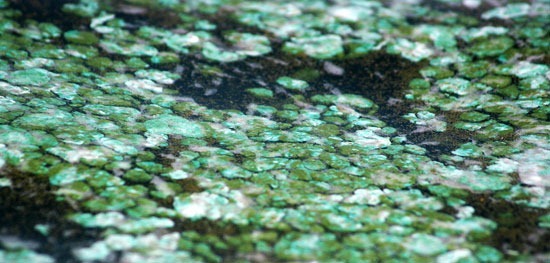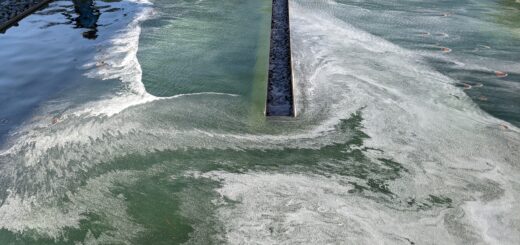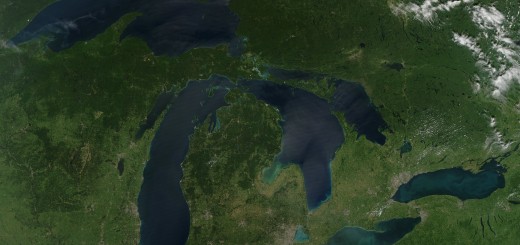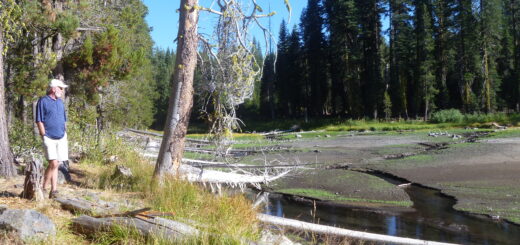Research Summary: Impact of Gobies on Native Fishes of the Lake Erie Drainage, Pennsylvania
0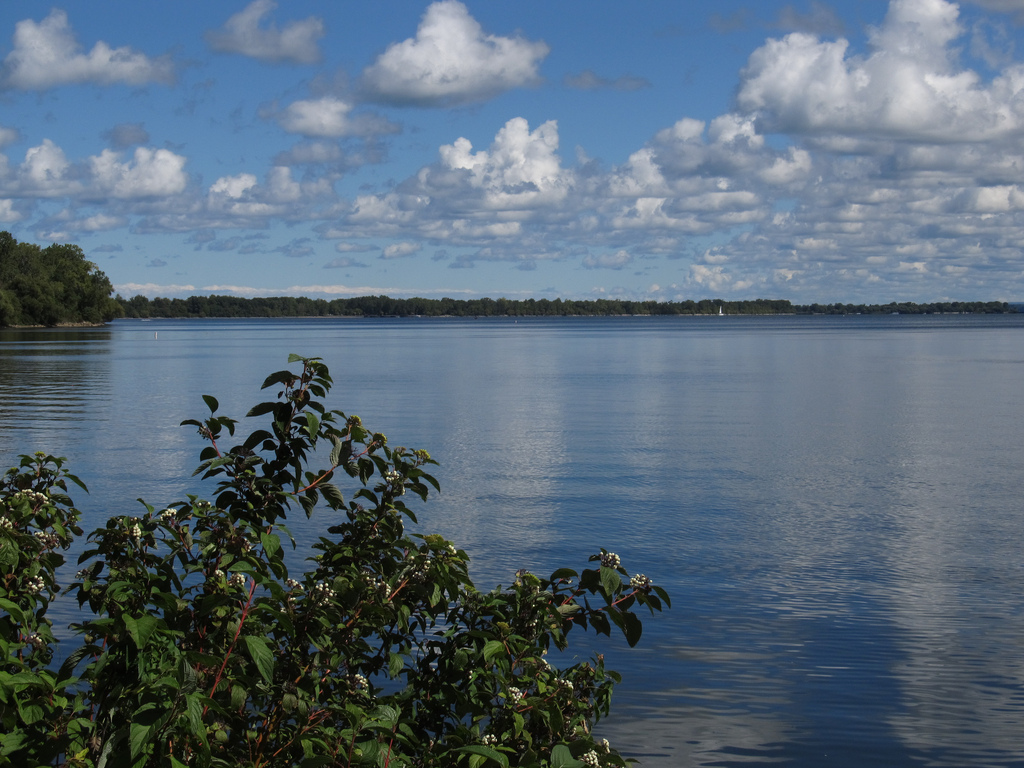
Presque Isle Bay. (Credit: Flickr User Ken Lund via Creative Commons)
Degradation of aquatic ecosystems by the introduction of nonnative fish species is exemplified in the Great Lakes of North America. Native fish communities in this region have been irreparably harmed by introductions, both accidental and intentional, of exotic species. The most recent round of aquatic invaders that have impacted the integrity of the Great Lakes are mainly Ponto-Caspian natives including Tubenose Gobies and Round Gobies. Round Gobies are the most prolific and widespread and have been responsible for the reduction and/or elimination of native fish populations in the Great Lakes Region. The purposes of this study are 1) to document changes of populations of benthic fishes in the Pennsylvania portion of Lake Erie; 2) to compare composition of diets of native fishes associated with the presence/absence of Round Gobies; and 3) to report the presence of the Tubenose Goby in Pennsylvania.
Methods
Annual assessment by the Pennsylvania Fish and Boat Commission Lake Erie Research Unit includes offshore (> 12 meters) bottom trawling during summer and fall. This effort provides an abundance index of forage fishes, young-of-the-year yellow perch, and, to some extent, adult fishes inhabiting hypolimnetic waters. Area trawled was calculated by multiplying distance trawled by the wing-spread of the trawl; thus, we were able to estimate the number of fish per hectare trawled. We sampled, anesthetized, and preserved Round Gobies in littoral habitats. Subsequently, they were transported to the laboratory where fish were measured and weighed. Gender was determined by examining external genitalia. Both saggital otoliths were removed for researchers to estimate age.
Gobies were also collected in a tributary to Lake Erie with seines to determine the fish composition and species diversity in areas where gobies were present and absent (above and below a natural waterfall). In a separate tributary, artificial plots were constructed and filled with differently sized substrate. We sampled fishes and macroinvertebrates once a month from June – September, 2012. Stomach contents of all benthic fishes were examined. Stomach contents were compared to results of the macroinvertebrate collections and electivity indices were calculated. Fishes in Presque Isle Bay were sampled using a benthic electric trawl.
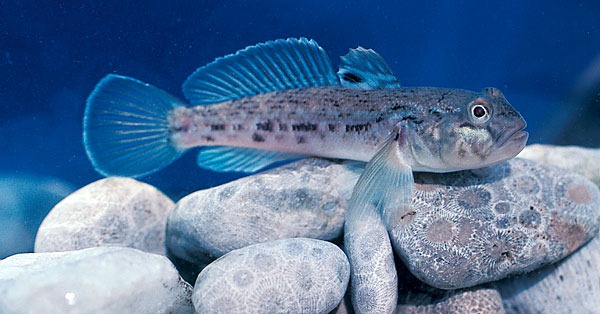
Round goby. (Credit: David Jude, University of Michigan News Service)
Results
Abundance of Round Gobies has increased since they were first documented in Pennsylvania’s waters of Lake Erie in 1996. In all cases, the number of native benthic fishes captured in the trawls decreased as the numbers of Round Gobies increased. Year-class strength and abundance of fishes fluctuate naturally; thus, presence/absence of the benthic species in the trawl samples was recorded. With the exception of the Troutperch, all other benthic species had a drastic decrease or were absent from all the trawls in the years subsequent to the population explosion of the Round Goby. Male gobies in Pennsylvania waters of Lake Erie were larger than females.
More individual fishes were captured by electrofishing in the section of stream with the absence of Round Gobies. In total, Rainbow Darters constituted the greatest percentage of benthic species composition at both sites, when Round Gobies were excluded. Brillouin’s diversity index at site 1 and 2 were 1.39 and 2.11, respectively.
In the second tributary, the only taxon that had a positive electivity index for the Round Goby was midges. The Rainbow Darter selectively fed on fly larvae. The Rainbow Darters in the absence of Round Gobies consumed primarily mayflies and stoneflies.
Collections with the electric trawl in Presque Isle Bay resulted in the capture of Tubenose Gobies, which was the first record of this species in Pennsylvania.
Conclusion
Within the lake, populations of the Round Goby have increased dramatically since they first invaded and another exotic fish, Tubenose Gobies, has colonized Presque Isle Bay.
In areas within the lake, where Round Gobies have extensively invaded, Logperch populations have drastically declined. Moreover, our data indicate that the Eastern Sand Darter, Channel Darter, and the Mottled Sculpin have not been able to maintain robust populations where Round Gobies have invaded. There was no major difference in size of females captured in pelagic habitats versus females captured in littoral habitats, but there was a difference for males. All males greater than 119 mm were captured in littoral habitat, most among the large boulders close to shore.
In the tributary streams of Lake Erie, the Round Goby appears to be in direct competition with the Rainbow Darter relative to prey items. Nevertheless, the Rainbow Darter has been successful in co-habiting with the Round Goby. Likewise, the Iowa Darter, Round Goby and Tubenose Goby do not appear to be in direct competition for prey items. In the Pennsylvania tributaries of Lake Erie, Rainbow Darters in lotic environs and Iowa Darters in lentic habitats continue to maintain robust populations in areas invaded by Round Gobies, unlike many other benthic species.
Full study presented at Tom Ridge Environmental Center 9th Annual Research Symposium, November 2013.
Selected References
- Charlebois, P. M., J. E. Marsden. R. G. Goettel, R. K. Wolfe, D. J. Jude, and S. Rudnika. 1997. The Round Goby, Neogobius melanostomus (Pallas), a review of European and North American literature. Illinois-Indiana Sea Grant Program and Illinois natural History Survey Special Publication 20. Champaign.
- French, J.R.P and D.J. Jude. 2001. Diet and diet overlap of nonindiginous gobies and small benthic native fishes co-inhabitating the St. Clair River, Michigan. Journal of Great Lakes Research. 27(3): 300-311.Jude, D. J and R. H. Reider, and G. R. Smith. 1992. Establishment of Gobiidae in the Great Lakes basin. Canadian Journal of Fisheries and Aquatic Sciences 49: 416-421.
- Jude, D. J., J. Janssen, and G. Crawford. 1995. Ecology, distribution, and impact of the newly introduced round and tubenose gobies on the biota of the St. Claire and Detroit Rivers. 447-460 In M. Munawar, T. Edsall, and J. Leach (eds.). The Lake Huron ecosystem: ecology, fisheries and management. Amsterdam, Netherlands: Ecovision World Monograph Series.
- Kolar, C. S. and D. M. Lodge. 2002. Ecological Predictions and Risk Assessment for Alien Fishes in North America. Science 289:1233-1236.
- Mills. E. L., Leach, J. H, Carlton J. T., and C. L. Secor. 1994. Exotic species and the integrity of the Great Lakes, lessons from the past. Bioscience 44(10): 666-676.
- Rosca, I, A. Novac, and V. Surugiu. 2010. Feeding selectivity of some benthic fish from the rocky bottom of the Romanian Black Sea Coast (Agigea Area). Rapp. Comm. Int. Mer Medit 39:648.
- van Snik Gray and J. R. Stauffer Jr. 1999. Comparative microhabitat use of ecologically similar benthic fishes. Environmental Biology of Fishes 56: 443-453.




